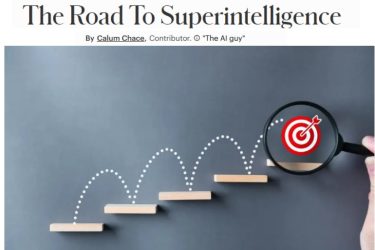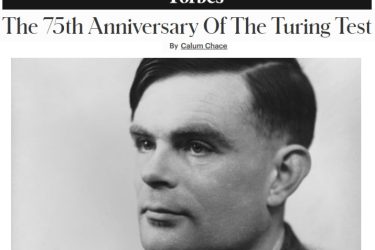The ATM automation meme

In an engaging TED talk recorded in September 2016i, economist David Autor points out that in the 45 years since the introduction of Automated Teller Machines (ATMs), the number of human bank tellers doubled from a quarter of a million to half a million. He argues that this demonstrates that automation does not cause unemployment – rather, it increases employment.
He says ATMs achieved this counter-intuitive feat by making it cheaper for banks to open new branches. The number of tellers per branch dropped by a third, but the number of branches increased by 40%. The ATMs replaced a big part of the previous function of the tellers (handing out cash) but the tellers were liberated to do more value-adding tasks, like selling insurance and credit cards.

This story about ATMs has become something of a meme, popular with people who want to believe that technological unemployment is not going to be a thing.
There are three problems with this account. One is that the numbers don’t seem to add up: if you increase the number of branches by 40% and reduce the number of tellers per branch by a third, you don’t get double the number of tellersii. But I don’t want to dwell on this problem: David Autor is a world-renowned economist and I’m not. I may have got my sums wrong! ?
It was deregulation, not ATMs
The second problem is that it is not true. The increase in bank tellers was not due to the productivity gains afforded by the ATMs. According to an analysis by finance author Erik Sherman, the increase was mostly due instead to a piece of financial deregulation, the Riegle-Neal Interstate Banking and Branching Efficiency Act of 1994, which removed many of the restrictions on opening bank branches across state lines. Most of the growth in the branch network occurred after this Act was passed in 1994, not before it.

This explains why teller numbers did not rise in the same way in other countries during the period. In the UK, for instance, retail bank employment just about held steady at around 350,000 between 1997 and 2013iv, despite significant growth in the country’s population, its wealth, and its demand for sophisticated financial services.
The third problem with Autor’s ATM story is that it is unnecessary. No-one is arguing that previous rounds of automation caused lasting unemployment. In 1800, US farms employed 80% of all American workers. In 1900 it was down to 40%, and by 2000 it was below 2%. This was due to automation – or to be more precise, to mechanisation. No doubt the shift was painful for many of the farm workers involved, but in the medium and long term they ended up doing better-paid, safer and more interesting work in towns and cities. And they – or their children – got an education to make sure they could do the new jobs.
It really could be different this time
The present worry about technological automation is that a new wave is coming, and it could be different this time. Previous rounds of automation have involved machines substituting for human and animal muscle power. Horses were put out of a job permanently because they had nothing to offer beyond muscle power – their population in the US went from 25m in 1900 to 2 million today.

We humans, by contrast, did have something else to offer: our cognitive skills. This is what the machines, powered by AI, are coming for this time. This time we will see a wave of cognitive automation.
We have had cognitive automation in the past: the role of secretaries has largely been automated by desktop computers. But it hasn’t really got started yet: after all, AI wasn’t very effective until machine learning was successfully applied to it, starting around 2012. Now machines can recognise images better than you can (including faces, which is one of humanity’s special talents), they are overtaking you in speech recognition, and they are catching up fast in natural language processing. And unlike you, they are improving at an exponential rate.
No-one knows for sure what the impact of this will be. But to declare at this early stage that widespread and lasting unemployment will not happen – just because it hasn’t happened in the past – is complacent and dangerous.

If we are smart, the outcome of cognitive automation could be wonderful. A world in which machines do all the boring stuff (jobs) could be a world in which humans get on with the important things in life, like socialising, learning, playing, exploring.
But there are challenges. In particular, we need to figure out how to give an income to everyone who no longer has a job. And not just a UBI-style subsistence income, but a decent income that allows us all to escape financial anxiety and achieve fulfilment.
Complacency
It is increasingly a matter for concern that even the (relatively few) people who have thought about this are complacent. At the recent Asilomar conference organised by the excellent Future of Life Institutev, the illustrious members of a discussion panel entitled “Implications of AI for the Economy and Society” were confident that there will always be plenty of jobs. MIT economist Andrew McAfee added that even if joblessness is coming, it is far too early to worry about it today.

Professor Stuart Russell was in the audience. A few years ago he played a key role in the process of waking the world up to the potential problems raised by artificial general intelligence and superintelligence. Now it seems he is doing the same thing regarding technological unemployment. Towards the end of the discussion he tried to puncture the complacency with a pertinent question; he was politely but firmly rebuffed by Google’s Eric Schmidt.
Autos and awareness
In the next decade, self-driving vehicles (autos for short) will render many professional drivers unemployed. This is not just because they save lives. (Human drivers kill 1.2m people around the world every year – a holocaust that we should not allow to continue now that we have the means to stop it.) It is also because they save cost. Human drivers usually constitute around a quarter of the cost of running a vehicle, and fleet owners will remove that cost as soon as they can.
Professional drivers earn white-collar salaries for blue-collar jobs, and there are no obvious replacements for these jobs. The unemployed drivers will be very unhappy, and we have just seen what happens to the politics of a country when a substantial slice of the electorate is very unhappy. What is more, factory workers, lawyers and nurses will all look at those drivers and think, ”that is me, in ten years or so.”

We are heading for an economic singularity, and unless our political and business leaders have some answers for how we are going to get through it, the consequences could be very ugly. It is time to wake up.
i. https://www.ted.com/talks/david_autor_why_are_there_still_so_many_jobs
ii. Start with 100 branches, each with 6 tellers, so you have 600 tellers in all. Increase the branch network to 140 and reduce the tellers per branch by a third to 4 and you get 560 tellers. Certainly not a doubling!
iii.
iv.
v. https://futureoflife.org/bai-2017/ Since I wrote this article, the FLI seems to have removed the video.
vi. As discussed in my book of the same name: http://amzn.to/29LWjaE


